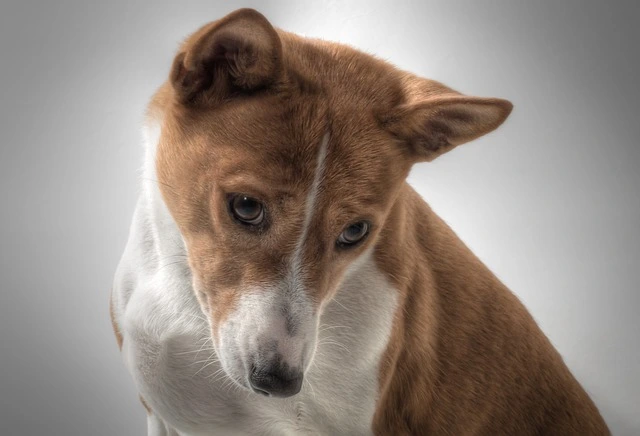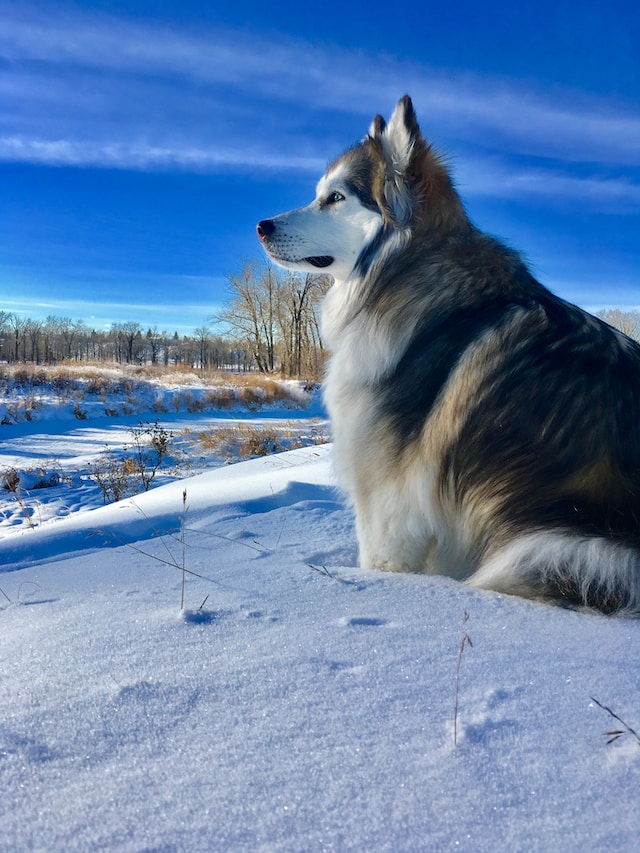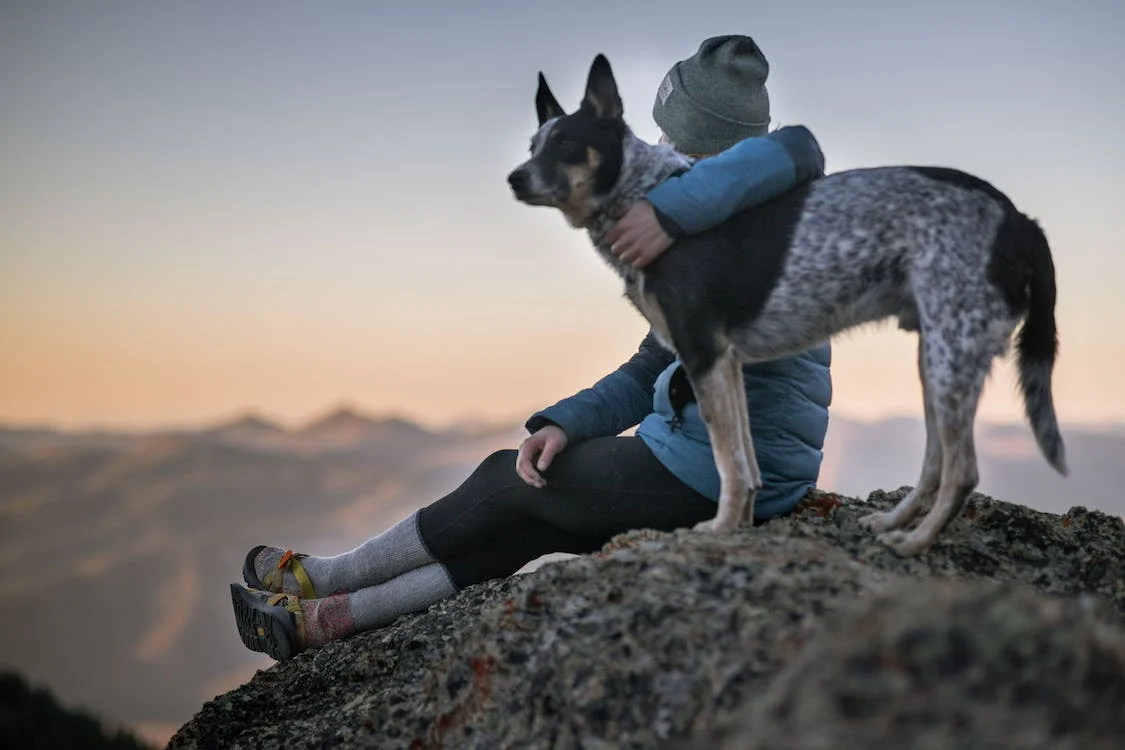What is the age of the world’s oldest dog breed? What was the first dog breed on the planet?
The answer isn’t as simple as it appears. While a study published in Nature revealed that the first dogs were domesticated between 20,000 and 40,000 years ago, fossil evidence suggests that dogs were domesticated around 14,000 years ago.
According to the Nature study, DNA from ancient dog breeds predates present popular types such as Labrador retrievers and poodles.
Greenland Sled Dog (9,500 years)

According to the genome of a dog sequenced from an archeological site on Russia’s Zhokhov Island, the Greenland sled dog may be the world’s oldest dog breed.
These dogs resemble modern Laika-type sled dogs, commonly known as Siberian Husky breeds. The bones were recovered with sledge fragments, providing experts with evidence that Greenland sled dogs were a working transport breed.
Greenland sled dogs, like the Siberian Husky, are linked to Alaskan malamutes.
- World’s Most Obedient Dog Breeds
- World’s Least Obedient Dog Breeds
- Top 10 High-Jumping Hounds
- Meet the Fastest Dog Breeds in the World
- The 5 Different Types of Pit Bull Dog Breeds
Basenji (6,000+ years)

The Basenji is an ancestor of Egyptian canines, but some believe they are African in origin. Basenjis do not bark, but instead make a yodeling-like sound.
They have a cat-like personality, complete with the need to be clean.Basenjis are known as the “jumping up and down dog” because of their propensity to leap vertically in thick grasses.
They require a lot of physical activity as well as cerebral stimulation. They are bright, yet can be obstinate. And don’t let them run loose; when their hunting instincts kick in, they’ll dash out an open door and climb over fences.
Akita Inu (5,000+ years)

There is considerable debate about the origins of the Akita Inu, but modern scientists believe the remains discovered at the Kamikuroiwa Rock Shelter site in Japan date from the end of the Initial Jomon period and the beginning of the Early Jomon period, which is approximately 5,000 years old and possibly older.
Nonetheless, these are some of the oldest dogs in the planet.The Akita Inu is a northern Japanese dog that is also known as the Japanese Akita or Great Japanese Dog.
They were originally bred to hunt wild boar, deer, and bear in Northern Japan’s harsh winters. They have a rich fur coat that might be red, fawn, white, brindle, or sesame in color.
The Akita Inu is a courageous breed recognized for its dignity and calmness. They are extremely devoted to their families and are frequently used as therapy dogs, police working dogs, and household pets.
Saluki

Salukis are thought to have originated at least 4,000 years ago in the Middle East’s Fertile Crescent. Egyptian monarchy regarded the breed as valuable and a valued companion; remnants of this kind of dog have been discovered in upper Nile tombs.
The Guinness Book of World Records lists them as the oldest dog breed, but this is based on sculptures of a dog that resembles a Saluki discovered in Sumer.
Arab tribesmen regarded these dogs as a gift from God (named “el hor,” which translates as “the noble”). The tribesmen treated their Salukis with the same care as they did their Arabian horses.
Salukis are still employed to hunt gazelle and deer in the Middle East nowadays.
Salukis can reach speeds of up to 42 miles per hour. They operate alone because they can sprint far faster than humans, which gives them their independent attitude.
They are fantastic jumpers and should run at least once or twice a week. They are available in a variety of colors and patterns, such as white, cream, fawn, golden, red, grizzle and tan, multicolored, and black and tan.

Siberian Huskies were first bred in the Chuckchi Peninsula, which is only about 100 miles from Alaska. Siberian Huskies are a well-known breed, famous for sled dog racing and connected with Alaska’s immense wilderness.
Siberian Huskies are well-known for their size. They rarely weigh more than 60 pounds, making them substantially lighter than the closely related Alaska malamute. They have beautiful blue eyes and are extremely intelligent.
Xoloitzcuintli

The Aztec name for Mexico’s hairless dog is “show-low-itz-QUEENT-ly” or “show-low” for short. Researchers believe the Xoloitzcuintli, one of the Americas’ oldest canine breeds, accompanied early migrations from Asia to Mexico at least 3,500 years ago.
Its name is derived from two Aztec words: Xolotl, the god of lightning and death, and itzcuintli, or dog. The dog of Xolotl, according to Aztec religion, was created to protect the living and guide the souls of the dead through the dangers of Mictlán, the Underworld.
The xolo’s lack of hair is caused by a genetic abnormality, which is also responsible for the dog’s loss of premolars. This distinguishing dental feature makes it simple to identify xolos remains in archaeological findings.
The furless bodies of Xolos act as great heat conductors, making them a kind of ancient hot-water bottle for the sick and aged. They are acutely aware of your illness and can pinpoint the source of your discomfort.
When Spanish conquistadors arrived in the New World, they nearly wiped off the Xolos. They are currently undergoing a renaissance, particularly among persons who are allergic to canine fur.
- World’s Most Obedient Dog Breeds
- World’s Least Obedient Dog Breeds
- Top 10 High-Jumping Hounds
- Meet the Fastest Dog Breeds in the World
- The 5 Different Types of Pit Bull Dog Breeds
Xolos are bright, well-mannered, affectionate, and playful canines. They are guard dogs and will bark at intruders. They also shiver easily, which could be due to a lack of body heat or an anxious disposition.
They are loving and loyal to their family, yet they can be suspicious of strangers and dogs. They thrive with lots of human attention and fare poorly when left alone. Every day, they require at least 20-30 minutes of activity.

